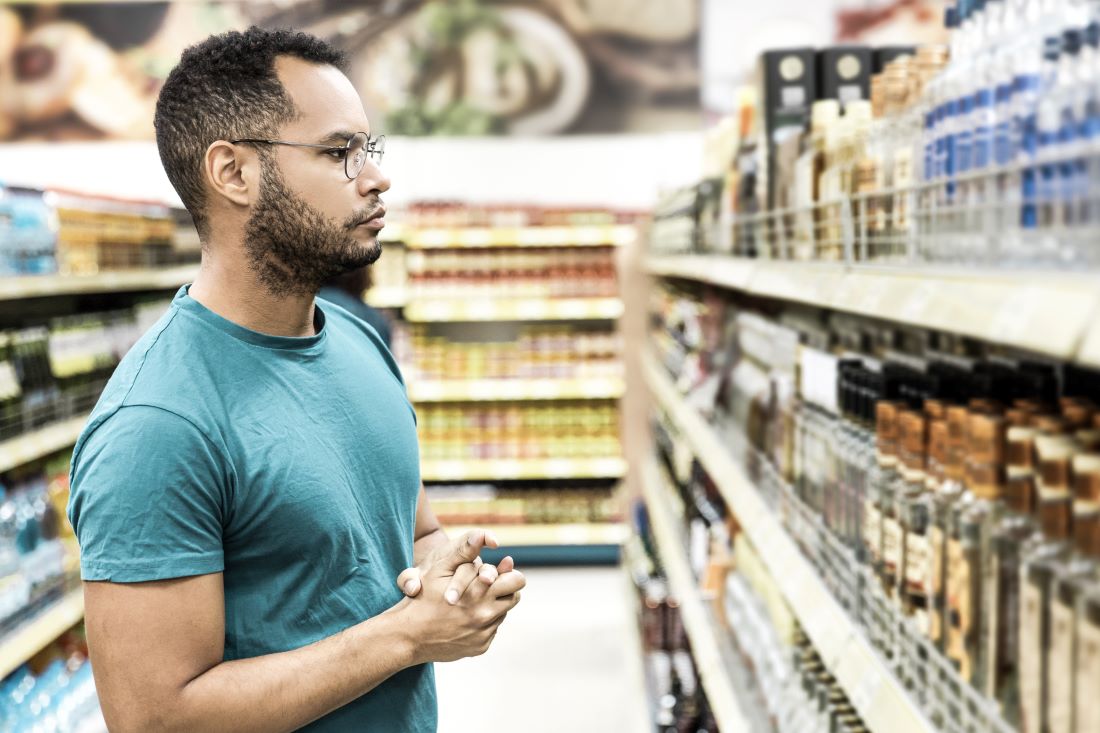There are many ways the COVID-19 pandemic has changed our daily lives. One of many interesting public health observations is the impact of the pandemic on alcohol consumption. Thanks in part to many bars and restaurants being closed at some point during the last year, off-premise alcohol sales saw a significant spike in spring 2020 and still remain higher than usual. This year for Alcohol Awareness Month we are sharing new resources that provide insights on this problem and guidance for how cities can address alcohol use since the onset of COVID-19.
In order to understand the need for regulating alcohol sales, it’s important to recognize that the availability of unhealthy products, like alcohol, plays a large role in the health of a community. One of the clearest ways to examine the availability of alcohol in a community is to measure alcohol outlet density. An alcohol outlet is anywhere alcohol is sold, including restaurants, bars, grocery stores or gas stations. Alcohol outlet density refers to the concentration of alcohol outlets within a given geographic area. Research points to a wide number of negative health behaviors associated with alcohol outlet density, including excessive alcohol use, violence, and underage drinking.
Unfortunately, a closer look at alcohol outlet locations reveals inequities in density, with an overconcentration of places to purchase alcohol in low-income and predominantly Black communities. For example, when examining two Baltimore neighborhoods, the one with a median income over $100K and over 80% white residents (Roland Park) has about 2.7 alcohol outlets per 10,000 people compared to the one with a median income under $25K and over 96% African American (Greenmount East) that had about 7.3 off-premises outlets per 10,000 people. This health equity concern closely mirrors what we observe with tobacco at the point of sale.
So what options exist for regulating alcohol outlet density? There are at least four types of alcohol outlet density restrictions:
- Geographic Restrictions: Limit the number of alcohol outlets per specific geographic unit.
- Population-Level Restrictions: Limit the number of alcohol outlets per population and can establish an outer limit on the total number of alcohol outlets in a city or county.
- Commercial Restrictions: Establish a cap on the percentage of retail alcohol outlets per total retail businesses in a geographic area.
- Time/Space Restrictions: Limit the location and operating hours of alcohol outlets. Location restrictions can be applied to protect sensitive land uses such as schools, parks, etc. and to address clustering by establishing minimum distance requirements between alcohol outlets.
A strong licensing program is often a key aspect of successfully implementing these policy options. While all states require licensing of private alcohol retailers, some states preempt the ability of local jurisdictions to enact policies that regulate outlet density. Another important first step to fully understanding alcohol outlet density, and its impact on health disparities, is to map retailer locations.
Counter Tools developed an online Alcohol Store Mapper tool for the Virginia Department of Behavioral Health & Developmental Services to map alcohol outlets across the state. The tool also identifies the locations of schools and parks to illustrate the potential impact of retailer proximity policies. This tool helps visualize alcohol retailer density and allows for demographic overlays to gain insight on disparities in density across communities.
To learn more about how alcohol outlet density affects health disparities in your community, contact Counter Tools at [email protected] or check out one of the additional resources below:






